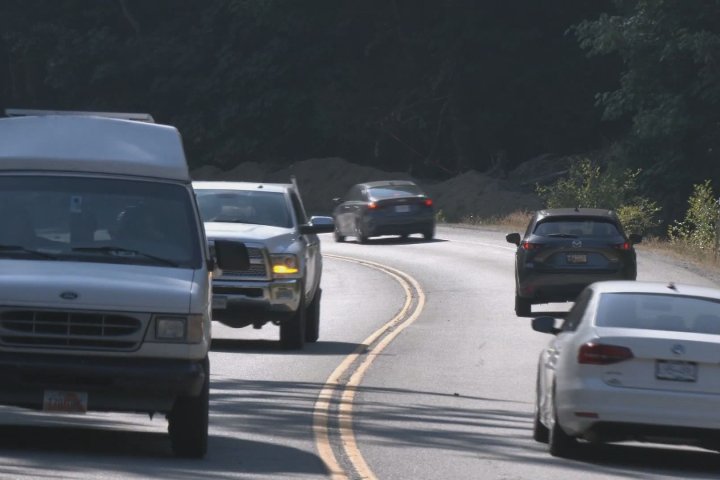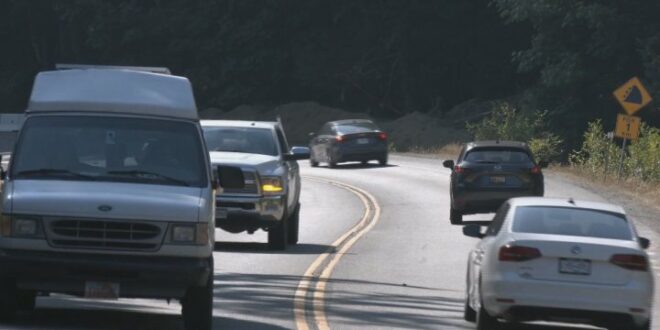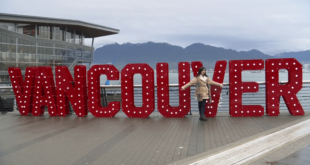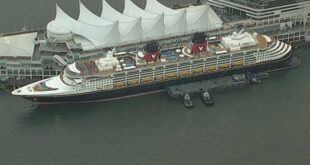
With Vancouver Island’s critical Highway 4 now open, the region’s elected leaders and stakeholders are turning their attention to compensation — and a new alternate route.
The highway fully reopened Thursday evening to two-way traffic, after a long summer of intermittent closures, single-lane traffic and roadwork.
The disruptive repairs were needed following damage from the Cameron Bluffs wildfire in June, and the effects of the closures have been significant on Tofino, Ucluelet and Port Alberni, whose businesses rely heavily on summer tourism.
“This is the tourist season, and it’s Labour Day weekend. This is usually when things kind of start to wind down,” Alberni Valley Chamber of Commerce CEO Jolleen Dick told Global News.
“It’s been three months of closures or not having it fully accessible for people, there’s added expenses when the road closes for increased staff time, missed opportunities, missed reservations — it’s huge, it’s really immeasurable. We need support because the cost to business is so much for all summer, when it’s the bulk of the season when people generate revenue.”
Dick said the chamber of commerce is preparing a report for senior levels of government that will lay out the costs to businesses, the gaps in available support, and what kind of help they feel businesses need.
Port Alberni’s mayor said she’s also actively advocating for help from the province.
Sharie Minions said the city has been in close communication with the region’s MLA, and that there are plans to meet with Premier David Eby at the upcoming Union of B.C. Municipalities (UBCM) conference.
“We know the government has been talking more specifically about compensation for community and businesses in the Okanagan area, and our community is actually considering putting forward an emergency resolution to UBCM … to discuss compensation to all communities that have been impacted by wildfire,” she said.
Highway 4 is the only paved road connecting Port Alberni and communities further west with the rest of Vancouver Island, and Minions said regional mayors have been in ongoing conversations with the Ministry of Transportation about an alternate route, to prevent them from being isolated in the future.
“We’ve heard tentatively there is a commitment to an alternate route study to be done,” she said, adding that the idea would be to look at not just a secondary highway, but a ready-to-go access road in case Highway 4 is closed again.
One possibility is with Qualicum via Horne Lake to the north. The Ministry of Transportation conducted a business case review of the idea in 2016, but the then-BC Liberal government rejected the $92-million project as too expensive.
Alberni-Clayoquot Regional District Chair John Alan Jack said stakeholders in the area are open to a variety of solutions to the issue.
“Right now we are looking at every alternative route possible, and then we’ll whittle that down over time and really focus on the one that makes the most economic, demographic and logistical sense,” he said.
While the road to deciding on any potential alternate route will likely be long and winding, the province is pledging to help the region with recovery efforts.
“After an emergency like a wildfire or flood is over, our focus shifts to taking quick action to help those in the impacted communities recover,” the Ministry of Emergency Management and Climate Readiness said in a statement.
“The Ministry of Jobs, Economic Development and Innovation has regional economic development teams throughout B.C. that will work with communities to support businesses that have been affected by wildfires.”
The statement added that the Ministry of Tourism and Destination BC are working with the west coast tourism industry and marketing agencies to try and aid recovery by attracting more visitors, and is calling on the public to book fall vacations in the region.
[ad_2]You can read more of the news on source
 Travelsmart
Travelsmart



